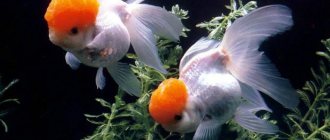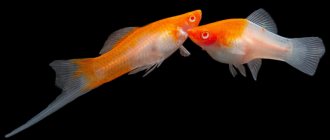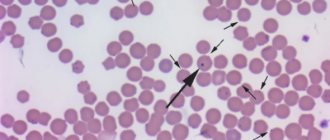Recently, you can buy a variety of exotic fish in pet stores. One of the most unusual, but very remarkable inhabitants of aquariums is the dwarf tetradon. Many people know very little about this cute and funny fish, so they often make mistakes when keeping them.
HABITAT IN NATURE
In recent years, a lot of fish native to India have appeared. These include the denison barb, the dario dario and many other, not yet so popular species. But standing apart from them is the dwarf yellow tetradon. They are originally from the state of Kerala, in southern India. They live in the Pamba River, which flows from the mountains and empties into Lake Vembanad (where they also live). The Pamba River is slow-moving and rich in vegetation. This means that the dwarf tetradon is a completely freshwater fish, unlike all its relatives, who at least need salted water.
Description
The maximum size of the fish is 3 cm. These small predators are in demand among aquarists. Dwarf tetradons prove that in a small aquarium you can keep not only guppies, but also more exotic and unusual species of fish.
Appearance
The body of the tetradon is drop-shaped, with sharp spines that protect the fish in times of danger. The dwarf pufferfish has large eyes that can rotate in different directions. The color changes depending on the mood: from green to brown with dark spots. The abdomen is white or slightly yellow.
Behavior
Dwarf fish are very smart. If the tetradon senses danger, it swells, acquiring a spherical shape and protruding needles. Pygmy predators love to hunt for live food. They are aggressive and territorial, keeping in a flock. They don't eat plants.
Lifespan
Small fish live relatively short lives, and the dwarf tetradon is no exception. With good maintenance and care, the tetradon will live for 5 years.
Tetradon price
In specialized stores, or from aquarium fish lovers, you can buy tetradon, and even a whole flock. Yellow notebooks cost from two hundred rubles. Green tetradons will be a little more expensive, from three hundred rubles.
Tetradon Kutkutya
Content
Dwarf tetradons are suitable for aquarists with little experience. Mandatory pet care includes maintaining stable water parameters in the aquarium.
Aquarium
For a small flock, a 20-liter container is sufficient. Remember that biological equilibrium is more difficult to establish in small vessels and they require frequent maintenance. Choose rectangular and square shaped aquariums. It is better not to use convex and round containers, since the specific shape of the walls causes stress in the fish.
Water parameters
In nature, tetradon lives in fresh water, so salt, even in small concentrations, is unacceptable. The range of water parameters in which pufferfish feel comfortable is narrow. Avoid sudden changes in temperature and hydrochemical composition of water. Periodically check the water with tests for ammonia compounds, water hardness and acidity. Perform weekly fluid changes of 20% of the total volume.
Habitat in nature
In recent years, a lot of fish native to India have appeared. These include the denison barb, the dario dario and many other, not yet so popular species.
But the dwarf tetraodon stands apart from them. They are native to Kerala and southern Karnataka in the Western Ghats of peninsular India. In Kerala, it is found in 13 rivers (as well as estuaries) including Chalakudy, Pambu, Periyar, Kabani, Bharatappuzha, Muvattupuzha, Achenkovil and Vamanapuram. It is also found in other freshwater habitats in the region such as Vembanad Lake and Thrissur Kole Wetlands.
This means that the dwarf tetraodon is a completely freshwater fish, unlike all its relatives, who at least need salted water.
Feeding
Dwarf fish eat live food and do not accept dry food. The diet should include:
- small bloodworm;
- tubifex;
- small snails (coil, physa, melania);
- coretra;
- gammarus for fish;
- daphnia;
- squid;
- earthworms;
- brine shrimp
Serve snails regularly. Using snail shells, pufferfish wear down their rapidly growing teeth. Breed shellfish in a separate container, so tetradon will have an important component of the diet. Remember that large snails are not suitable. If your dwarf fish refuses frozen food, mix it with live food, pre-treating it in a solution of potassium permanganate, methylene blue or piperazine. Feed the fish 1-2 times a day in portions that are eaten within 2-3 minutes.
Differences between a male and a female
Males are smaller in size than females, with a dark line running along their entire white abdomen and a ventral crest that they raise during mating. The male may also be darker in color. There is also a dorsal crest, but it is difficult to see due to insufficient coloration. Both crests will be straightened during the male's courtship with the female, and will also acquire a yellow color. Males also have developed folds behind the eyes, which is not observed in females.
Females tend to be more rounded, slightly larger than males, and may have more spots on the bottom.
Compatibility
It is better to stock dwarf predators in a species aquarium. Tetradons may be compatible with herbivorous, non-aggressive aquarium inhabitants:
- zebrafish;
- iris;
- rasborami;
- corridors;
- neon.
Large species of shrimp, such as amano and cherry shrimp, are suitable for living together. You cannot house dwarf tetradons with large fish and those with long fins. Guppies, goldfish, cichlids are unsuccessful bedfellows.
Who do dwarf snailophiles get along with?
All tetradons are quite active, mobile and willful, and dwarf ones are no exception. Different owners have opposite opinions about their livability. For some, these small inhabitants coexist peacefully with other living creatures, while for others, they mercilessly eat the fins of their neighbors and terrorize them.
It is best to keep a flock of these bullies separately, without putting anyone in danger. You can add large shrimp to them, but these little pufferfish will feed on small ones. If, nevertheless, tetradons end up in a common aquarium, a spacious container with abundant vegetation will help reduce their aggression. The same applies to their individual content.
Although it is difficult to predict how these little tyrants will behave towards other inhabitants, the best company for them can be called:
- iris;
- otocinclus;
- zebrafish;
- rasborov espey;
- cherry and amano shrimp;
- Ramiresi's Apistogram;
- discus.
But it is not recommended to house yellow pufferfish with the following aquatic inhabitants:
- veiled tails;
- small shrimps;
- guppy;
- platies;
- cichlids;
- predatory catfish.
Reproduction
Tetradons are easy to propagate in an aquarium. A spawning tank will be required to preserve the offspring. Create good conditions in the spawning tank. Install a filter that will not suck in the fry or create a strong flow of water. Plant the plants.
Sex differences
Distinguish males from females by their deeper coloration and dark line on the belly. Sometimes the fins of males turn yellow. Females are larger and plumper than males.
View this post on Instagram
Analyzing their dots to try to recognize them a little #carinotetraodon#travan#carinotetraodontravancoricus#minipufferfish#minipuffer#pufferfish#puffer#fish#tank#fiahtank#tetraodontidae#tetraodontiformes#poissonglobe#poissonballon#globefish#freshwater#estuaire#eaudouce#india#indian
A post shared by LET'S GET THIS BREED (@shrimpette_) on Jul 5, 2018 at 4:00pm PDT
Spawning
A couple of weeks before spawning, feed your fish nutritious live food. Place a pair or group of fish, where there will be 1 male and several females. Tetradons spawn on plant leaves and soil. From one female you can get up to 10 eggs.
After laying the eggs, release the parents. The fry appear after 3–5 days. Starter feed:
- microworms;
- ciliates;
- Artemia nauplii;
- small snails;
- frozen food.
If several generations are growing together, sort the fry by size, as the larger ones may eat the smaller ones. By two months the fry grows to 1 cm.
View this post on Instagram
#aquarium .#aquarium .#tetradon.#tetradon .#carinotetraodontravancoricus .#dwarf tetradon#thundersnails .#snail hunter.#snail eater.#snail destroyer.#snails in aquarium
A post shared by aqualiveplants (@aqualiveplants) on Jun 28, 2015 at 12:38pm PDT
Breeding
Many species do not reproduce in captivity. It is extremely difficult to obtain offspring from others. Reproduction is stimulated by frequent water changes, increasing the temperature, and adding vitamins and microelements to the diet. These measures so rarely have a positive outcome that there are still no specific recommendations for stimulating spawning.
Tetradon reproduction process
Shar fish lays up to 500 eggs either on the substrate or simply in the water column. The male guards the eggs until the fry appear (8-9 days), after which the parents lose interest in the offspring and perceive them as food. Therefore, if the fry are successfully reproduced, it is better to transplant them into another aquarium and feed them with Artemia nauplii.
Diseases
The dwarf predator has a strong immune system and rarely gets sick. A common cause of the disease is incorrect water parameters and feeding, and lack of aquarium hygiene.
Ammonia poisoning
Pufferfish produce a lot of waste, so failure to clean the aquarium on time can cause excess ammonia, which is dangerous for the fish. When poisoned, the gills are inflamed and red. Immediately clean up the aquarium and check the water for dangerous compounds. Smoothly improve water quality.
Nitrate poisoning
When poisoned by nitrates, tetradon becomes restless and fussy. The gills and fins are spread out, the fish is greedily trying to breathe. A sick individual can be placed in an aquarium with clean water with similar parameters. Carry out general cleaning in the general aquarium, check the water for nitrates.
Dropsy
The abdomen of the dwarf predator swells, the color fades. Often the disease is caused by poor quality food. Review your fish's diet.
Features of behavior
The yellow tetradon has developed intelligence. One to two months after moving into the aquarium, the fish begins to recognize its owner. And when he approaches the aquarium, the pet swims up to the glass and begins to actively “greet” the person, waving his fins.
Due to its belonging to the pufferfish family, the fish has spines on its body. In a calm state, they are invisible, but if you scare the tetradon, it will turn into a ball and begin to use its spines as protection. Frequent inflation has a negative impact on your pet's health, and therefore it is better not to create stressful situations for it.
Lifespan
The average lifespan of fish with proper care is about 6 years.
Photo
Hunting style
Aquarium tetradons are predatory fish that have a very interesting hunting style. As a rule, they are located above potential prey and carefully examine it, taking careful aim. In a small area around a potential victim, these fish can take it by surprise. Only a few seconds later the tetradon attacks its victim. However, his dash does not always bring success. Sometimes even the coretre manages to avoid a fatal attack. After an unsuccessful attempt, the dwarf tetradon starts hunting again from the beginning.
Adviсe
- Do not provoke fish to swell into a ball, because this is a protective mechanism that is accompanied by severe stress. Do not disturb the fish unless necessary, do not knock on the glass or touch them.
- If the fish behave like spawning, but you do not see eggs, walk along the ground with a small hose. There will be eggs among the drained water.
- Store-bought frozen food is not the best option, since the aquarist has no knowledge of the quality of the food and how it was stored. A safe option is to make homemade frozen food. Freezing as a method of processing fish food is very effective.
- Wash your hands when handling the aquarium. Cleaning equipment must be free of traces of detergents.
Dwarf tetradons are said to be poisonous. Large animals that eat them die due to the poisonous mucus or fish needles. If you need to come into contact with tetradon, make sure that there are no scratches or other damage on your hands.
Previous
Fish Tips for keeping a large cleaner - brocade catfish!
Next
FishWhat you need to know to breed barbs in an aquarium
Interesting Facts
- The dwarf tetradon is a smart fish. When people appear, he sticks to the glass, protruding his eyes; begs for food, “dancing” near the glass. He quickly begins to understand who brings him food and recognizes his breadwinner in any crowd.
- At the slightest stress, dwarf tetradons triple in size, turning into a ball. They know how to inflate their tummy with air and water.
- Before attacking the chosen prey, these predators freeze for a long time in one position, closely examining their target. They attack only with good aim.
- When getting ready to sleep, the tetradon lies on its side and curls its tail, like a domestic cat.
- Red and orange colors irritate these fish, causing them to attack. If there are inhabitants in the aquarium painted in these colors, tetradons will never leave them alone.
- This little one tries to eat even large snails, biting off pieces of them. That is, it acts on the principle “Whatever I don’t eat, I’ll bite it.”
- During the day, fish rarely show aggression, going out to hunt at night. Most often they attack fish living in the lower layer of the aquarium.
- Tetradons swim using their pectoral fins and their tail tucked. At the same time, it seems that he is not there at all. They straighten their tail part only when faced with their own kind.
Schedule
Strange as it may sound, the tetradon fish sticks to its daily routine. She wakes up when the lights are turned on or with the first rays of the sun at dawn. After warming up their fins, these fish swim up to the front glass of the aquarium and look out for the owner, who must feed them. After a stormy meal, each notebook finds a secluded place, and life in the artificial reservoir calms down. Once full, adult fish fall into a light slumber, and young fish spend all their free time playing.
In the late afternoon, sexually mature tetradons begin to pay attention to their other neighbors. At the same time, the males acquire a darker color and begin to swim around tufts of moss, waiting for the favor of the female and scaring off rivals. Such flirting of the fish continues until about 7 pm. At about 20 o'clock, dwarf tetradons begin to settle down for the night. At the same time, they do not pay the slightest attention to the lighting of the aquarium.











